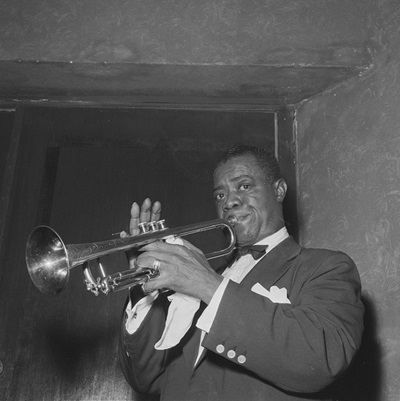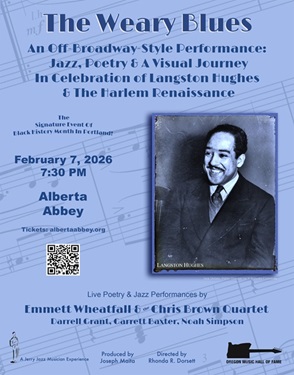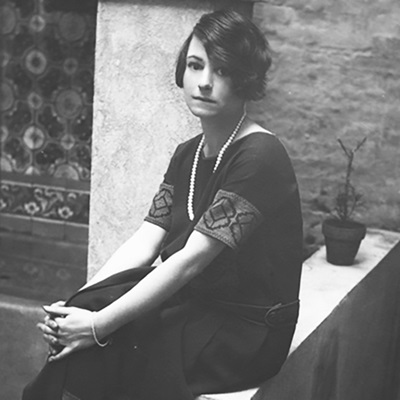.
.
“Thunder,” a story by Robert Knox, was a short-listed entry in our recently concluded 59th Short Fiction Contest, and is published with the consent of the author
.
.
___
.
.
Unknown photographer/via Wikimedia Commons
Bob Dylan performing at St. Lawrence University, New York; November 26, 1963
.
___
.
.
Thunder
by Robert Knox
.
….. The voice comes down from the bedroom, winding down the stairs, crankily.
….. It does not at once compel in the manner of one of my “favorite singers” on the radio. I am a person, to use the word loosely, who does not own record albums, or a record player. What I hear from upstairs at her house, wailing down from the steps in that unassimilable voice, is the whine of the prairie. A rusty gate. A barroom complaint.
….. Sometimes, merely an exhausted reproach. Yes, a whine.
….. Penny’s father has a complaint of his own when hears the voice. “Is that that guy again?” he demands, less in irritation than in older generation bemusement. “I call him the groaner.”
….. A few years later I would be taught to regard that word complaint as the birth pang of lyric poetry. The poem itself is a “plaint.”
….. I have no theory of music, or lyric poetry, then. I am all of sixteen, going on seventeen, maybe, by this point. Still, the older of the two of us.
….. She was everything.
….. School, I suppose, was still all right. I was in the classes I should be, getting along with the teachers and the other students in them. A little recovered from my early adolescent retreat from all human contact the previous year. Other people, I learned, were OK to fool around with. And make little quips to, that might sound clever to somebody.
….. Was there more to life? (Than quips? Than clever?)
….. Then there was.
….. She was electric.
….. She would say, at times, impossibly absurd, incredible things. I would reply with some incredulous query. “Why do you say that?”
….. And she would answer, “Because I have faith.” Or, “Because it’s Holy Week.”
….. Something to do, I thought, mulling it over, with her Catholic school early education. Which, happily for me, was now over because she had talked her mother in letting her go to a public high school.
….. Her mother, though, watched her like a hawk – no, like a totalitarian police force. She cross-examined Penny if her face appeared “flushed.” If her “pulse was up.” Her voice “sounded excited.”
….. If Penny at times appeared flushed, excited, pulse racing – ? of course she was! She was a teenager! An adolescent girl! A post-pubescent female! Thank goodness!
….. A nurse by profession, Penny’s mother was obsessed with “the signs” of drug abuse she read about in glossy magazines. She read medical charts as well, observing what doctors observed on her three-to-eleven shift nursing in the local hospital.
….. She knew all the warning signs, she warned her daughter.
….. “Why is your temperature so high? Are you taking drugs? Pills? What have you been taking?”
….. Unfortunately, Penny’s Mom not only read the popular magazines that lay on the low table in the lobby or the waiting room for the X-rays, she took dead seriously the profit-motivated worry pieces about an epidemic of drugging by white suburban teens who lived in respectable, single-family neighborhoods. Really? Where would I find them, I asked myself, after searching the bare-bones medicine cabinet in my own home. Drugs? What drugs? Intoxicating adhesives? Uppers? Barbiturates? Plain old model airplane glue? Which I would not find in my house because I was too clumsy, or lazy, to make model anythings. I might search the house from top-to-bottom and never find anything more hallucinogenic than aspirin.
….. Penny had signs all right. The signs that pointed to hormones. Had her Mom been so scarred by her own early religious school training and nunnery-abuse that she would forever regard any and all signs of female maturity as the work of the devil? How had she managed a few conceptions of her own?
….. My girl – because that’s who Penny already was; I was sure of it – possessed more than sufficient reason for complaint, poetic or otherwise. She found a soundtrack for her needs in the voice and lyrics of the recording artist her father consistently identified as ‘the groaner’ after the first few notes.
….. How many miles must a man walk down…?
….. Hey, you masters of war…
….. Who would dare to say anything like that back then? To them?
….. “A bullet from the back of the bush took Medgar Evers’ life.”
….. True enough. Undeniable. But could you make a song out of such things? Was it allowed? Wouldn’t the people who owned the newspapers and the television stations jump in front of you and wave their fingers and say, “Hey, none of that! That’s our territory! See the copyright on those news films? The big black headlines?” Had I, or anybody that I knew, even heard of names such as Guthrie or Seeger back then? Folk music got up to Peter, Paul and Mary, and then stalled. Some old tragedies got into singers’ repertoires once in a while, stuff about mine collapses, or shipping disasters, or people getting hanged who maybe shouldn’t have been, and then a few sad stories from long-ago wars that people no longer remembered or cared much about. Then they’d shake their pretty locks and follow up with something wholesome, or funny, or just plain likable.
….. But not the groaner. The voice of the groaner might follow Medgar Evers with Hattie Carroll.
….. What was this? Was there something new blowing in the wind? Was it the answer, my friend?
….. And who were these “friends” of his? How could this whiner arrive at the nerve, the gall, the chutzpah, to lecture these unnamed “friends” about everything in the world?
….. The something beyond the twang in his voice that derived, perhaps, from the so-called “authentic” folk singers – as if they all, like Woody Guthrie, truly derived from Oakie families fleeing the Dust Bowl – that the groaner presumably learned from and copied. The power he assumed from that hard-traveling, roots music.
…..And then changed it.
….. “What I assume, you shall assume…” That mantra was going around too, along with “the best minds of my generation,” and that season to “turn, turn, turn,” although I never knew what I was supposed to be assuming. Or which, exactly, was the season for turning. All I knew was that every time I turned around things were changing. I think everybody else thought that everybody else knew the answer to that question that was blowing in the wind.
….. I just knew I was hungry to know. I was hungry to know anything. I didn’t know anything about “assuming” back then. Whoever the groaner was, though, he made assumptions.
.
So he created himself, borrowing from those who had gone before. But – I interrupt myself: Do I dare to interrupt myself? – is this folktale about the groaner or about us? We adolescents who listened to him, the master of “the masters of war.”
….. The voice behind the door. The door that rocket-fueled teenaged Penny opened first and then shared with me. The voice, first of its kind we encountered with a ready sneer. Also with a well-formulated putdown at the ready, if called for by the occasion. A reporter’s obnoxious, or merely silly, question. “They say you’re the voice of a new generation…”
….. Got that right.
….. How many miles could this man walk? Here was a pop star, a media creation, a whys-guy with legs. He walked out of a university in Minnesota and took a bus to New York City. Why NYC? Because that’s where they kept the stages.
….. I was trapped in an adolescent dream-cycle a couple of hours away by public transportation. Short on bravado, lacking transport, I dwelled on the edge of the place-to-be, but could seldom manage to be there. While the slyly ambitious, Midwestern, sneering-cool personality got himself to the outer-borough, hopeless-case rehab center to visit the near-death bed of last-legs Woody Guthrie.
….. At that age I could never even speak to a stranger, needing always to be spoken to first, much less find my way to the Staten Island facility housing the wreck of the original vagabond, the unvarnished test model of the American folk-sing hero. Very ill and in need of attention.
….. The daemon, perhaps, knows how it’s done.
.
Penny has qualities that I lack. She “aches just like” – a person?
….. A curtain opens for new production in a staid, schoolboy, b&w, postwar subdivision existence: Laughter and Tears.
….. My girl spoke first, and asked questions later. Embarrassed a boyishly-oversized white freak on the school basketball team by offering some nonce greeting, and flummoxing the poor giant with the prospect of speaking to a girl. All that long-limbed pale skin turning pink.
….. Why did you do that? I silently demand. If you want to do that, I’m around.
….. As if there was nothing worse than an embarrassed white male teenager. (I could be right about that.) Penny turned me into a pillar of self-consciousness all the time. “What’s the matter?” she’d demand.
….. If I could say it, I wanted to say – but couldn’t – it wouldn’t be “the matter” any longer. It went on being the matter.
….. Penny was the current in the connection. Possessor of the unwashed personality, always meaning well, shocking the timid. Candid adult males – seemed to me you had to be all grown up to be one of these – could make her blush.
….. But she got over it quickly; got in the next dig.
….. “Shut up, Packert,” omitting the mister, the ordinary-use title for our journalism teacher, “before I report you.”
….. She made people laugh.
….. Or herself. Which was just as good.
….. Home, however, as I sometimes overheard, her mother would scold her. Nag. Threaten, Raise her voice.
….. Sometimes Penny shouted back. Sometimes, rather routinely, tears followed. A soap opera I could not imagine being part of.
….. My fleshly existence became a wave. Her presence in my life lifting me up, separating me from the ground. The sand distant from my feet, a lost continent below; until I smacked down. The continual up and down of feeling, sensation: thought, touch, speech, agitation of the mind all mixed up. What she felt. What we both felt. Meeting at her locker before the first bell for homeroom. Handing me some note on blue paper she had written the night before. The first confessional poems of my experience; from her to me, from me to her. Just the ordinary roller-coaster language of adolescence, in handwritings that appeared to emanate from different continents, different tongues, different planets. “Feeling,” experienced as new, unique, never before available to human kind.
….. Turning red, at the lockers, as she handed me her paper “troth.” Who knew what color I was? “I’ll see you fourth period,” she said. “And die till then.”
….. I died those days too. I died all the time.
.
Where did those lines, the original ones out in the ether that so inspired us, uplifted us, moved us, informed us we were broken pieces of a fractured universe that was all around us and struggling to fit itself back together – where did that come from?
….. And the genius for finding the right music for them. Where (how?) had Penny discovered the then-youthful voice of a generation? The voice drifting down the stairs, probing the cracks, looking for the weak places, infiltrating the House of Atreus (where we all lived) with our guilty awareness of ancient and equally contemporary crimes. That bullet from the back of the bush.
….. What did that action mean – that original sin, the first death in the decade of assassinations? Did the mind that wrote the song know what Evers meant to James Baldwin? Did he pull this unforgiveable knowledge out of the breathless, sultry atmosphere of a centuries-old miasma soaking into a guilty land?
….. We dripped with sin, all of us.
.
And then, somehow a year passes, and then another. After so much success, the voice of an era would not repeat himself. He simply stepped away from his legacy. He reinvented his act.
….. He wrote different kinds of songs. No longer stood on stage alone, the sole signifier of the terrible truths that needed telling.
….. We hated that. We loved “the times they are a-changin’,” but hated the changes.
….. And then changed yet again, a few years later, after we had learned to love the first changes. After the accident; the lengthy recovery. The double album with the mocking, meretricious title, “Self-Portrait.” Released (we later learned) to fulfill a contract obligation with a company he wished to separate from. A divorce; a musical starting over.
.
Motorcycle, black madonna, two-wheeled gypsy queen.
….. She was my rebel.
….. Even if the biggest victory she managed all week was getting out of the house on Friday night with only the vaguest excuse for her “plans.” She was going over to her girlfriend’s; she was always doing that.
….. When her father complained that the noise from the record player was too loud, she would jog up the stairs and close the door to the room. Leaving it cracked, though, so we could still hear.
….. Upstairs, her bedroom, was the utterly forbidden territory. What I would have given to be allowed up there. Baby, let me follow you – well, ‘up.’
….. Wanting to touch her, hold her, be alone with her in some sacred space… As we sit in the small square of the eat-in kitchen, touching each other as best we could, a mere dozen feet around the corner from where the adults sat sucking up the evening lies of Big Brother the tube. The umbrella of silence and deception beneath which we all endured.
….. What do I have left of those times but that voice?
….. My love that spoke in silence? Spoke truth – like ice, like fire.
.
Where did any of all that come from? In those days the new people appeared, starting from nothing.
….. How do you learn to speak to another human being, and so become one yourself? A species of knowledge for which you cannot rely on institutions.
….. You borrow words from the people’s poets.
….. You expose what they have discovered.
….. You are born in ice, and fire.
….. The storm is the private space beneath the umbrella of sound. We called it love. She called it love… so I had no choice but to follow down that path.
….. But she was the first to be called. She carried the flame. Others made promises by the hour. We had hours of fire. And some ice along the way.
….. The plaintive voice passed through her and cultivated me, opened me. Sewed seeds that rose to the surface through my slow and solid earth… Prepared my ground by days, seeded my dreams.
….. Led a mind out of darkness, the cave of childhood. Beyond its mouth, the wind howled.
….. We froze on winter nights, walking the streets to keep warm. Pausing at corners to put our frozen fingers underneath each other’s nylon jackets. Looking for somewhere to go. Not finding it.
.
We grew a year older. Penny struggled to play “Masters of War” on a borrowed guitar.
….. I went away, needing to play my own game. Every room I entered seemed to have its own stereo, its own songs. Its own scent. Every face had his own prophet, his own potion, his own plan. Some read books, repeated quotations.
….. While I struggled at the university of traditional aspirations to catch those who had already traveled far beyond me on the cultural wave triggered by the seismic groaner and his now many disciples, my girl stayed behind and yet journeyed into deeper spaces still. Only when I returned at semester’s end, did I learn that she had mastered the chords for “Masters of War” sufficiently to sing the anthem in the school auditorium at a “talent” show for the senior class.
….. Performing it – as I learned from a photo – her hair religiously straight now, while wearing a blue work shirt and jeans only because the performers were permitted to wear such a “costume” on stage. The times, aside from Penny and the groaner, apparently not yet changing overmuch on the home front.
….. Someone took a picture. B&W.
….. I hungered for that picture.
….. I wanted to be what that voice proclaimed. Some marriage of her voice and the vision revealed by the deadpan midwestern traveling mystic king. A rider for the two-wheel gypsy queen.
….. I wanted to laugh like flowers when we ran from the tear gas after the cops broke up the demonstration at the local induction center.
….. I want to be there still, so many years later, when I watch a film and hear the voice of the unreconstructed groaner, the wunderkind one-time bad boy genius and Orphic scold now a wrecked-looking age-mate like everybody else. When he replies to the off-screen questioner, asking yet again the riddle of the Sphinx:
….. “Life is not about finding yourself. It’s about creating yourself.”
….. He knew.
….. Most of us would take decades to figure that out. But he was in a hurry. He was blatantly ambitious, and impatient with the insufficiently motivated. Those content to be like other people; and to ask him to be that way as well.
….. I never got to keep that picture. I went looking for my own song.
.
.
___
.
.

Robert Knox is the author of House Stories, a new collection of linked short stories set in the early 1970s, published by Adelaide Books and available from Amazon at House Stories.He is also the author of Suosso’s Lane, a novel based on the notorious Sacco and Vanzetti case. He is a contributing editor for the poetry journal Verse-Virtual, and a correspondent for the Boston Globe.
His story “Searching Alex” was published previously on Jerry Jazz Musician, and his stories have also been published by Words With Jam, The Tishman Review, Lunch Ticket, and Unlikely Stories, among other journals.
.
.
Listen to the 1963 recording of Bob Dylan performing “Masters of War” [Columbia Records]
.
.
___
.
.
Click here to read “His Second Instrument,” by Dave Wakely, the winning story in the 59th Jerry Jazz Musician Short Fiction Contest
Click here to read “Mouth Organ” by Emily Jon Tobias, the winning story in the 58th Jerry Jazz Musician Short Fiction Contest
Click here to read “Opus One,” a short story by Amadea Tanner
Click here to read “Face Value,” a short story by Rebecca Givens Rolland
Click here for information about the upcoming Jerry Jazz Musician Short Fiction Contest
.
.
.















































Intense indeed!